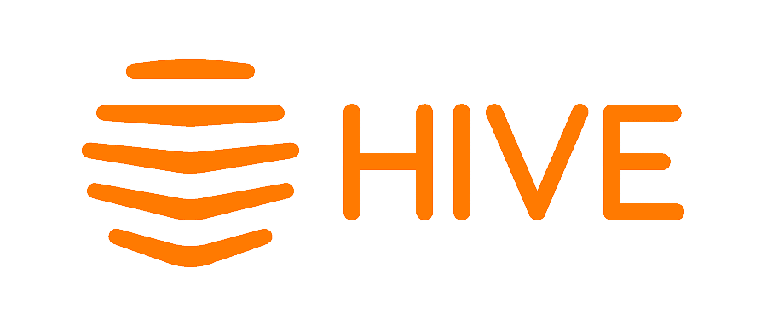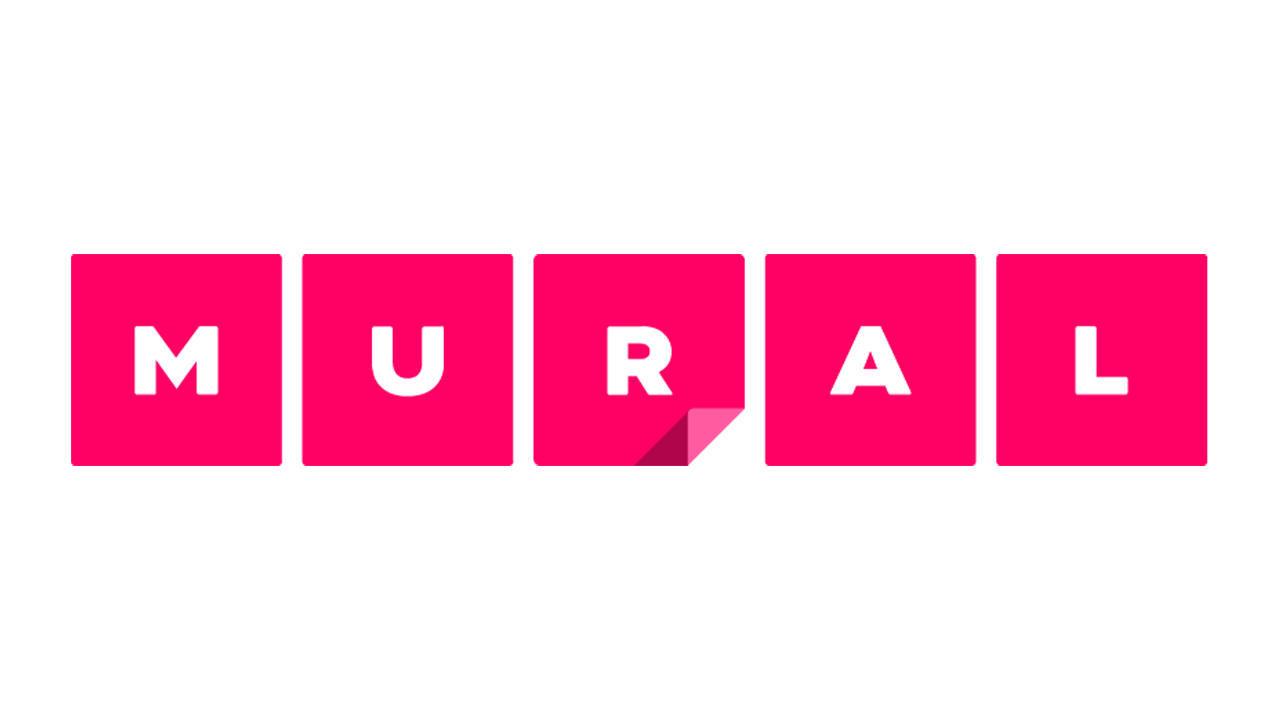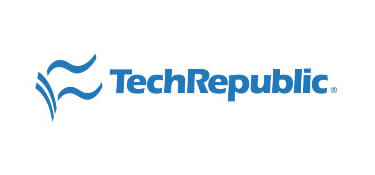Lee Gimpel, president and founder at Better Meetings, says that New Year’s Eve doesn’t have to be about expensive champagne, fancy hors d’oeuvres, or the right party favors. “At its core, New Year’s is a moment of transition; it’s the closing of one chapter and the opening of another,” he says. “It’s naturally a time to look back at what mattered, what was meaningful, what brought joy, and to look ahead at what’s next.”
“People often get wrapped up in the metaphoric sizzle of a party and forget about the steak,” Gimpel told The Independent via email. “They’ll rent an expensive venue in an exclusive zip code, offer an open bar, serve lots of food, and invest heavily in decorations. But at the end of the day, what people remember is how they felt and whether they actually enjoyed themselves.”
Gimpel says, “A few coffee breaks isn’t real engagement. I spend most of my time helping conferences and associations solve this problem, and the first thing I would usually suggest is that we move away from the typical formats where one person does a presentation to a passive audience or a few are part of a panel speaking to a passive audience. If we total up the hours that our participants spend at an event where they are just being `talked at’ rather than being engaged, regardless of their age, it’s usually an overwhelming imbalance.”
Gimpel also notes that planners can do more on the front end to determine what “belonging” specifically means for this group, at this meeting. “A fundamental step that I go through with associations and conference planners is to ask who among the participants should meet and what does a home-run meeting look like?” she says. “Is it buyers and sellers? Is it liver researchers and heart researchers?… Once we start thinking more intentionally, strategically, and purposefully about who should be meeting and why, then we start to think about how to design a conference that makes that happen.”
Gimpel advocates for similar collaborative approaches. “Any activity that requires people to work together or discuss something in small groups tends to succeed online,” he says. “This could be solving a problem, round tables, etc.” The emphasis on shared activities transforms networking from awkward small talk into purposeful collaboration.
Small events can be great, but often in ways that would be different compared to big events. According to Lee Gimpel, an expert on strategic meeting design and the founder of Better Meetings in Washington, D.C., it’s similar to going to a stadium concert as opposed to hearing a musician in an intimate space — or attending a big university with a great football team compared to going to a small school where you know everyone and feel a real sense of community.
Lee Gimpel, founder of Better Meetings, also uses the five whys to get to the root cause of holding the event or networking session. He noted that the networking piece in event design is very passive. “We just leave it up to the serendipity of these hallway moments and hope people are like, ‘Oh my God that was amazing. I met this one person getting cheese.’ But it happens pretty rarely, percentage-wise. We can do a much, much better job.”
The “people value” of a name tag is particularly important for first-time conference-goers. Meeting planners and membership officials want to engage them in the conference, so they renew their membership and come back to the next meeting. Ultimately, says Gimpel, these first-times will decide if the conference was valuable, “if they feel included and part of the community.”
“Planning an event should always start with why you are doing an event,” advises Lee Gimpel, president of Washington, D.C.-based meeting design, facilitation, and training company Better Meetings. “Often, planners jump right to executing on the what and how of an event. So a planner might say that he or she is going to do an event for 500 people because that’s usually the size that this organization hosts—but if we really get back to why we are going to do this event, the best event may actually be for 20 people, or it might be 10 different events with 20 people, or it might be best served by having 5,000 people.”
Lee Gimpel is the founder of Better Meetings in Washington, DC. Gimpel says that with events, people often confuse being thoughtful — thinking about decisions and choices — with being intentional, which is to say really having an intent and then designing an event to manifest those intentions.
“Yes, being intentional requires thought, but a lot of events skip true intention-setting and then spend a lot of time and thought on details that aren’t connected to the purpose,” Gimpel says.
Perhaps the most obvious result of this thought exercise is it puts the focus on the real content, purpose, and the people. After all, if participants walk away from a business retreat or an annual conference and their lasting impression was either that the soup was cold or the shrimp was amazing, the event probably missed its intended mark.
Instead, people should come away from such events remarking on how they learned something new and helpful, made an important decision, met someone who could be a terrific linchpin in their career, or felt a sense of clarity around the mission or the organization.
― Lee Gimpel, Forbes contributor; facilitation, conference & meetings expert
Whether you’re an executive or a conference speaker, your energy is usually better spent doing the work that you really care about rather than preparing a speech.
In addition, interviews tend to be more digestible for an audience while humanizing the speaker in a way that doesn’t happen when someone stands at a lectern reading a speech or teleprompter. Having a one-on-one conversation is a more natural scenario for people to find themselves in rather than standing in front of a crowd delivering a one-to-many presentation.
― Lee Gimpel, Forbes contributor; facilitation, conference & meetings expert
“I think a lot of conferences are very well-meaning when they add a first-time attendee ribbon to participants’ name tags,” says Lee Gimpel, the founder of consulting firm Better Meetings. But he encourages planners to take the next step to truly welcome these new guests and integrate them into the event community. “It doesn’t necessarily take much,” he explains. “It could be a charge issued from the stage by the chairman of the board or someone respected within the community.”
“So often, association gatherings such as annual conferences are planned with a vastly disproportionate focus on logistics and presentations while largely leaving the experience, the connections, and the sense of community as an afterthought. Flipping the script and putting engagement at the center of planning an event makes it more valuable for attendees (and sponsors and exhibitors), while also being more dynamic, more fun, harnessing more brainpower, and fostering a loyal, long- term community.”
According to Forbes contributor Lee Gimpel, knowing how to be a good meeting facilitator can take your lukewarm meeting to a mind-blowing one: “It can be very challenging to recall when your organization had a good meeting, never mind one that was great. However, after mentally scanning back through the year, the answer that one arrives at is usually when some outside expert came in to run a meeting. This expert is typically a professional facilitator.”
“Many large-scale association meetings are designed around content rather than connection,” said Lee Gimpel, founder and principal of Better Meetings. “A networking coffee break or first-time reception isn’t always enough.”
Knowing that attendees are looking to get to know their colleagues and develop relationships with them onsite, associations must design a program that prioritizes connection and keeps them coming back year after year.
“There is great potential power in corporate events. If done right, they reinforce important bonds, build new bridges, and define and foster a strong culture,” says Gimpel, who is seeing a rise in more frequent, casual company retreats that bring in employees of all levels, rather than just upper management. “They offer an opportunity to get real work done while also rewarding people and making them happy that this is where they have chosen to work. A two-day event can pay dividends for months and months.”
Lee Gimpel, an event designer, conference facilitator, and meeting trainer in Washington, D.C., says that for all the talk of the pandemic being over, along with travel and meetings coming back, some organizations still seem to be hedging their bets.
“If you’re not convinced that everyone who used to attend in person is still going to show up, and you’re generally feeling less certain about people’s willingness and ability to travel, then it’s easier to bet on a smaller event versus a bigger one,” says Gimpel, founder of Better Meetings, a firm that creates in-person, online and hybrid events on team meetings, conferences, retreats and networking.
According to Lee Gimpel, meeting planning expert and founder of Better Meetings, a meeting design, facilitation, and training company in Washington, DC, a tradeshow often has at least three masters with three different objectives.
“The event organizers often see it as a cash cow that brings in revenue. The exhibitors go because they want to make sales or find partners. And the attendees are looking for real solutions to their issues,” Gimpel says. “Many tradeshows seem to be overweighted to producing revenue for the organizer versus really delivering homerun results for the exhibitors and the attendees.”
Unfortunately, when soliciting effective ways to make sure that everyone is indeed heard in meetings, you typically get vague platitudes rather than actionable techniques. Whatever techniques are employed are often not working either.
― Lee Gimpel, Forbes contributor; facilitation, conference & meetings expert
We’ve all seen this happen before: A written organizational update becomes a meeting. Then that meeting swells to become an even bigger meeting, with more and more people being added to each iteration. And then that meeting continues to happen every time the organization needs an update. Of course, most organizations—or departments or project teams—will never see a meeting of the scale and grandiosity of a State of the Union Address. But, in a way, the State of the Union is a cautionary tale for organizations of all sizes.
― Lee Gimpel, Forbes contributor; facilitation, conference & meetings expert
“Surveys and our own practical experience tell us that a huge part of the value people get when attending events comes from meeting other people,” notes Lee Gimpel, president of Better Meetings. “That may be connecting with an existing customer, finding a new client, engaging with a new partner, or being able to do a deep dive and answer really specific questions with someone who has special expertise. In other words, while watching someone do a presentation at an event may have value, those presentations are rarely the home run that gets people excited about attending an event.”
“Most organizations have too many meetings, and most meetings aren’t good,” Lee Gimpel, founder of the Washington DC-based meeting facilitation and training firm Better Meetings, told the Guardian. “Canceling all meetings is a blunt tool that still doesn’t necessarily fix what’s going on.”
Lee Gimpel is a meeting planning expert and founder of Better Meetings, a meeting design, facilitation and training company in Washington, D.C. that works on improving in-person and online meetings with a focus on engagement. Gimpel says some gamification at events seems like “gimmicky window dressing,” and it doesn’t really move the needle in terms of engagement or bottom-line results. In addition, the variety of gamification strategies don’t always offer the best results.
“Planners have learned they can reach a new audience and bring in new revenue with hybrid and virtual events. They have also leveled the playing field. Conferences can be elitist. They are expensive to get to, and it is not possible for everybody to get away from responsibilities,” says Lee Gimpel, founder and principal of Better Meetings.
But how do you distill the collective wisdom from a group so that the best ideas and solutions can be acted on quickly? Here are a few collaborative team exercises that are drawn from effective meeting facilitation practices. They’re used to effectively harness a team’s knowledge in less time than it takes to consume all the orange slices at halftime.
“Most conference rooms today are really set up for individual, one-to-many PowerPoint presentations rather than true, equitable collaboration,” says meeting expert Lee Gimpel.
Meeting expert Lee Gimpel likes adding a section to the event’s website with the names of general attendees, the same way you might for speakers. “Attendees often judge a conference not just by the content it can deliver, but also by the connections that one will make there.”
Gimpel advises that meeting planners don’t just think about networking as what happens during a so-called “networking reception.” Rather, networking can also be a lot more subtle and covert. For example, if you have roundtables or little working groups at an event, that’s a great place for people to network with peers — even if networking isn’t part of the session description.
Gimpel recommends going for volume first: Aim to generate lots of ideas before judging which ones are better than others. “One of the most effective ways to avoid a pitfall of brainstorming is to put more ideas on the table rather than only start with a few possibilities,” he says. “This is a very common approach where divergent thinking gives rise to many possibilities, and then convergent thinking narrows those down to the best answers.”
According to Lee Gimpel, founder of Better Meetings, today’s event design seems to be really rooted in logistics, which certainly makes a lot of sense. How many rooms do you need? How many chairs? “I think — or hope — that event design is evolving to become more human-centered,” Gimpel says. So, for example, an event designer should now be placing more emphasis on the interaction happening around the tables as opposed to what’s being served on top of them.
Lee Gimpel, founder of Better Meetings, a meeting training firm, has seen all of this himself—time and time again. “It’s astounding,” he says. “Even with high-ranking people, I’m looking up their nose. It’s mysterious to me that after two years of doing this every day, they have not recognized the basics.”
Lee Gimpel, Founder and Principal at BetterMeetings.expert, tells us you should “Augment meetings with collaborative tools. I frequently recommend collaborative whiteboards like MURAL because they’re a really easy, fun, and effective way to engage an audience on a topic rather than just talking at them. ”
Making good decisions takes more effort than simply being a leader driving through an idea. It’s certainly understandable that leaders often want to skip meetings or simply make them a formality. But with only a few changes, meetings can result in much better decision-making while also saving a leader from fatal missteps that doom a career, an organization or a country.
As a general guiding principle, Gimpel would suggest always putting people first. That might mean not doing long sessions where people are just sitting for an hour. It might mean looking for venues with natural light instead of those that feel like being in a beige bunker. It might mean prohibiting speakers from using PowerPoint and having to think of other ways to communicate with their audience. It also means thinking about how to really include participants so they feel valued and engaged, and not lonely and ignored.
“Although this can sound sacrilegious when talking about meeting planning, I’m often trying to help clients think about content and connections over logistics,” notes Lee Gimpel, founder of Better Meetings, a Washington, D.C.-based meeting design, facilitation and training company. “Of course, the logistics of an event are a really big determinant of its success. However, I think we often over-weight how much the audience cares about all the things in the background versus what they’re really getting from the event.”
One of the best ways to improve the satisfaction and effectiveness of online meetings is to improve the quality of the presentations. The prospect of sitting through bad virtual presentations with dull slide decks isn’t appealing.
One of the biggest complaints of meetings is that they have become rituals where people are forced to sit through boring, ineffective slideshow presentations. It seems to be a modern fact of life. This is true in big companies and small firms, as well as in tiny rooms and on giant conference screens.
Of course, it’s hard for a webinar to win an unmovable place on people’s busy schedules these days. However, the bar for most webinars is very low. Thus, if you promise attendees a good, helpful, engaging experience and then actually deliver, you’ll likely see them come back again and again.
If you organize events or manage a group, you’re likely being asked to do a hybrid meeting. That might be so that people can join in-person or online for a small staff meeting, an important board meeting or a big conference. Combining online and offline elements makes sense—on the surface.
Virtual exhibit booths often don’t deliver on what attendees and exhibitors really want. Here are seven ways to make them more valuable and effective.
“Although the technology has gotten quite good, it’s still hard to have more than a handful of people in an online room because of the challenges of cross-talk and picking up visual cues like when someone is about to speak,” explains Gimpel, who says to avoid having “meeting tourists” who are just there to observe but aren’t critical for the decisions at hand.
“The reality is that many bosses are only doing what their bosses did before them, and no one really ever learned how to run a good meeting,” said Lee Gimpel, founder of Better Meetings, a company that designs, facilitates and offers training for meetings. “It’s often a case of the blind leading the blind. Even a small amount of training on how to hold meetings can pay
dividends for years and years for the manager as well as other employees who then model what that manager is doing.”
Given the outsized importance of meetings—on time, money and morale—and the positive impact even minimal training can have, organizations should prioritize equipping managers with meeting skills. If managers are responsible for leading meetings for hours every week, year after year, what are the long-term dividends if each of those meetings is only 10 percent more effective?
One of the easiest ways to think about meeting engagement is simply the amount of time that each person could potentially speak. We can think of it as each person’s potential meeting participation portion.
Before getting too deep or too excited about doing your own hybrid meeting, here are two questions to ask yourself or your team that may help slow your roll and appropriately focus your meeting planning.
Unfortunately, the prevailing mentality with virtual event platforms seems to be an exercise in reconciling opposite ideas: (1) This is a totally different experience online. (2) It should also be the same as attending in person.
“Doing post-event surveys and looking at that data helps event organizers understand what works and what we should keep, but also what to improve and how to improve it,” says Lee Gimpel, founder and president of Washington, D.C.-based Better Meetings. “There’s no end to the questions that we might want to ask at the conclusion of an event. However, try to be conscious of those questions that will give you the most bang for the buck.”
Here are some common culprits that online conferences label as networking opportunities, but which don’t deliver on that promise.
Going virtual has forced many organizations to reassess the entire concept of how to deliver education and what engagement should look like, said meetings expert Lee Gimpel, founder of Better Meetings, a meeting facilitation, training, and design firm working on in-person, online, and hybrid meetings and conferences. With online meetings, there are different opportunities for meeting organizers to create unique features and customized content in a way that’s not possible when meeting in person.
Yes, many online meetings were dull, boring and ineffective. We’d be right to run away from that. However, there are four very big buts to the narrative that online meetings are bad and good riddance to them.
Gimpel suggests breaking up your presentation into five to ten-minute segments and including pauses for discussion breaks: “It could be taking questions earlier in a presentation or putting people in small groups to discuss an idea. The more time people spend doing things on their own, the less time that you have to be a great speaker yourself.”
“If your boss runs a tedious meeting in person, it’s still probably going to be a tedious meeting online—and different technology is often only changing things at the margins,” says Lee Gimpel, the founder of Better Meetings.
“While it sounds sacrilegious to say, I find that online networking can actually outperform what happens when you put a bunch of people in a room and hope that they’ll engage,” says professional meeting planner Lee Gimpel, founder of Better Meetings.
“When we’re working from home, creating a place that is private and free of distractions is important,” says Lee Gimpel, founder and principal at Better Meetings. “Having a dedicated, demarcated space lets the people around us know that we’re working — but it’s also a signal to ourselves that we’re in a work zone. And as work life and home life increasingly bleed together by necessity, it’s important to have a space where you can do a video call and you don’t have the sounds of somebody making breakfast or a dog barking interrupting you.”
Lee Gimpel, founder and principal of Better Meetings, says that this kind of interactive approach makes for a more successful result than the typical Zoom-with-drinks approach. Holiday parties are “largely about bonding, even if [they’re] not advertised as a teambuilding event,” he said.
International consulting firm, Factum Global, recently hosted an interactive virtual session about “Thriving internationally in times of COVID-19 and beyond.” Facilitated by Lee Gimpel of Better Meetings, the event featured a dialogue with Thomas Smith, Executive Director, American Society of Civil Engineers (ASCE) and Scott Stuart, CEO, the Turnaround Management Association (TMA).
“It’s important to ask what an event doesn’t need to carry over online — as well as what could be new, different and valuable if we’re not bound by time and space as we would be in a convention center,” Gimpel says. “In a number of respects, a virtual event can actually deliver more value than one that’s in person.”
Have you ever been tricked into attending a webinar or an online presentation because it promised to be interactive and engaging? Rather than delivering on these buzzwords, it ended up being basically the same old boring online presentation that one has unfortunately come to expect.
Lee Gimpel
Forbes Contributor: facilitation, conference & meetings expert
As this trend seems here to stay, it’s time to really think about your home office as your full-time office and outfit it accordingly for both individual effort and the remote meetings in which you’ll participate.
Lee Gimpel
Forbes Contributor: facilitation, conference & meetings expert
“Just as we never see a giant group of 50 people talking to each other at a roundtable or a reception, big numbers like that don’t work well in online breakouts,” says Gimpel, who thinks that breakout rooms of three to four people typically work best in a virtual environment. “People can easily connect at this size, but they don’t get lost in the shuffle and facelessness of a big group.”
Thom Singer met Lee Gimpel from Better Meetings through the American Society of Association Executives (ASAE). Lee is a meeting expert who works with groups to ensure their conferences, conventions, board meetings, and networking gatherings have lasting impact. In the past few months he has been in high gear helping associations go virtual.
According to Lee Gimpel, founder of Better Meetings, a meeting design, facilitation, and training firm, “If you don’t know why you’re meeting, it’s hard to know if your time was well-spent or not. Just jotting down a simple statement at the top of your agenda or in your calendar invitation can go a long way.”
“Think about ways to keep an audience from having to sit still and quiet for long blocks of time, while also reducing the amount of time you personally have to hold their attention. It’s much easier to fix the format than it is to fix a presenter,” Gimpel says.
Lee Gimpel, founder of Better Meetings, a meeting design, facilitation, and training company in Washington, D.C., recommends preventing participants from changing their names. To do so, use the Security button in the host toolbar. “Being able to lock down these controls prevents [people] from being disruptive and limiting the damage they can do.”
Many organizations just suddenly started doing all their meetings virtually. Few of them probably had “the talk” about what their online meeting culture would be like … “It’s important in terms of culture and consistency to stop and think for a moment how your organization is going to handle this new environment.”
― meeting expert Lee Gimpel
Meeting trainer Lee Gimpel of Better Meetings says Zoom is especially useful for keeping teams connected. “I like Zoom’s breakout rooms as a way to replicate the water cooler moments that happen in a physical space.”
“Zoom adds a little name tag to participants’ video boxes. This is really nice when people don’t know each other. You can also go a step beyond just names and edit them to add roles, locations or other bits of information that are helpful in a work context or that help people in the room build some interpersonal connections,” says meeting expert Lee Gimpel.
Lest you think a virtual presentation is like any other face-to-face experience, it’s important to remember that it is not: The bar is actually set higher. “It’s easy for participants to drift into another browser tab, get sucked into their phones, or decide to fold laundry instead of giving you their full attention,” explains Lee Gimpel, founder of Better Meetings, a meeting training, design and facilitation company.
What makes a meeting a success? That answer is likely different for someone tasked with the immense responsibility of organizing the event versus an attendee. ― Lee Gimpel, a conference facilitator, meeting trainer, and event designer in Washington, DC.
Lee Gimpel, founder of Better Meetings, recommends pairing up attendees and asking them to share something relevant to the task at hand. For instance, if the group is working on a new product idea, prompt them with the question, “What’s a product that you really like and why?” or if they’re marketers, ask them to describe their all-time favorite ad campaign.
As someone who provides meeting facilitation training in Washington, DC as well as in Maryland, and Virginia, I’m struck by two aspects of the region that make it unique for entrepreneurs.
― Lee Gimpel, founder of Better Meetings
“There’s an old adage that brains work when they’re turned on,” says Lee Gimpel, founder of Better Meetings, a meeting design, facilitation, and training company. “Yet, in many meetings, it’s really easy to zone out; your brain is not asked to do anything more than keep your eyes open.”
Better Meetings’ Lee Gimpel recommended that when meeting someone, look for ways to make a real connection. “This could be the result of knowing something about someone that you have in common . People tend to try to connect on banal topics that don’t do much to build rapport (weather or transportation to the meeting),” he said.
“So many of today’s conferences and events are still stuck in yesterday where it’s just one ho-hum speaker or panel or workshop or PowerPoint presentation after the other. Whether it’s creating a larger experience, gamifying content, or crafting more audience participation, there are great, easy ways to make events both more immersive and effective.”
― Lee Gimpel, founder of Better Meetings, a meeting design, facilitation, and training company in Washington, DC.
“Many conferences focus heavily on sharing knowledge, but they seem to miss a focus on connecting people and their experiences, ideas and challenges. Attendees don’t want to be bored. They don’t want to be lectured to for hours on end. Rather, they want to be able to connect, to learn from others, to share their knowledge and feel like their time was well spent.”
― meeting expert, Lee Gimpel
“I think organizers get caught up in the logistics and focus on impressive food and cool décor, but then forget about the attendees and why they’re at the event,” says Gimpel. “More than having great healthy food options, I want conferences to have great content and make awesome connections. If they did that and I had mediocre food, I’d still rave about the event and want to return the next year.”
If the boss is leading a discussion, subordinates may not dissent for fear of retribution. And as often as one hears, “There are no dumb ideas,” people don’t always feel comfortable making outside-the-box suggestions.
A handful of meeting spaces like Catalyst Ranch, most of which have opened in the past few years, operate in the U.S. Though unaffiliated, they share common decor themes, which is to say they all resemble kindergarten classrooms. The spaces are awash in natural light, done in bold colors, and filled with comfy chairs and an assortment of toys.

















































